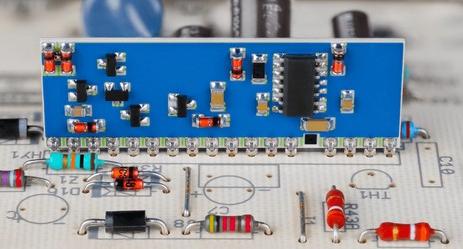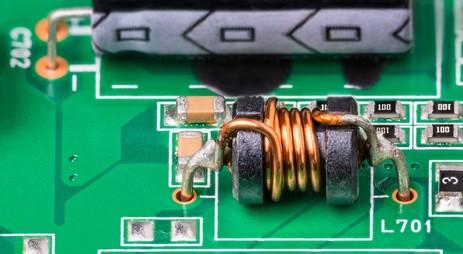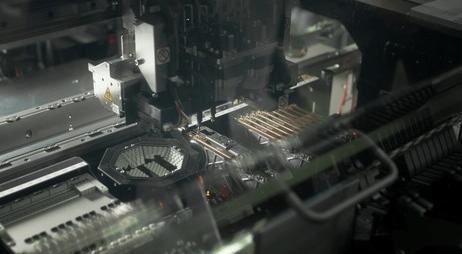Content Menu
● Understanding SMT Line Loaders
● Key Features of SMT Line Loaders
>> 1. Automation Level
>> 2. Loading Capacity
>> 3. Adjustable Loading Speed
>> 4. Integration with Control Systems
>> 5. Sensor Technology
>> 6. User-Friendly Interface
>> 7. Safety Features
>> 8. Durability and Reliability
● Additional Considerations When Choosing an SMT Line Loader
>> Maintenance Requirements
>> Cost Efficiency
>> 11. Scalability
● Conclusion
● FAQ
>> 1. What is an SMT line loader?
>> 2. How does automation benefit SMT loaders?
>> 3. What factors should I consider regarding loading capacity?
>> 4. Why is sensor technology important in SMT loaders?
>> 5. How do I ensure safety when using an SMT line loader?
In the fast-paced world of electronics manufacturing, Surface Mount Technology (SMT) has become the preferred method for assembling printed circuit boards (PCBs). At the heart of this process lies the SMT line loader, a critical component that sets the stage for efficient production. This article delves into the essential features to consider when selecting an SMT line loader, ensuring optimal performance and productivity in your assembly line.

Understanding SMT Line Loaders
The SMT line loader is the first machine in an SMT assembly line. Its primary function is to load bare PCBs onto the production line, ensuring a steady and automated flow of materials. A well-designed loader not only enhances efficiency but also minimizes manual labor, reducing the risk of errors and improving overall production quality.
Key Features of SMT Line Loaders
When evaluating an SMT line loader, several key features should be considered:
1. Automation Level
Automation is a crucial aspect of modern manufacturing processes. A fully automated SMT line loader can significantly increase efficiency by continuously feeding PCBs into the assembly line without manual intervention. This reduces labor costs and minimizes human error.
- Benefits of Automation:
- Continuous operation without breaks
- Reduced labor costs
- Enhanced precision and consistency
Automation can also facilitate advanced features such as automatic PCB alignment and error detection, which further streamline operations.
2. Loading Capacity
The loading capacity of an SMT line loader determines how many PCBs it can handle simultaneously. Depending on your production volume, you may require a loader that can accommodate multiple magazines or trays.
- Considerations:
- Single-magazine vs. multi-magazine loaders
- Compatibility with various PCB sizes and thicknesses
A higher loading capacity allows for longer uninterrupted runs, which is particularly beneficial in high-volume manufacturing environments where downtime must be minimized.
3. Adjustable Loading Speed
An effective SMT line loader should allow for adjustable loading speeds to match the pace of the production line. This feature ensures that the loader can adapt to different production requirements, optimizing throughput without causing bottlenecks.
- Importance of Adjustable Speed:
- Flexibility to accommodate varying production demands
- Prevention of downtime due to mismatched speeds
Adjustable speeds also enable manufacturers to fine-tune their operations based on real-time data and production needs, allowing for greater responsiveness to market changes.
4. Integration with Control Systems
A modern SMT line loader should seamlessly integrate with the overall control system of the SMT line. This integration allows for synchronized operations between different machines, enhancing workflow efficiency.
- Key Integration Features:
- Communication protocols (e.g., SMEMA)
- Real-time monitoring and feedback systems
Integration with control systems also allows for better data collection and analysis, enabling manufacturers to optimize their processes based on historical performance metrics.
5. Sensor Technology
Advanced sensor technology is vital for ensuring accurate loading and alignment of PCBs. Sensors can detect PCB presence, orientation, and any potential misalignments before they enter subsequent processes.
- Benefits of Sensor Technology:
- Prevents damage to PCBs
- Reduces waste caused by misaligned boards
Moreover, sensors can provide valuable feedback to operators, alerting them to potential issues before they escalate into significant problems.
6. User-Friendly Interface
A user-friendly interface simplifies operation and maintenance tasks for operators. Look for loaders with intuitive controls, clear displays, and easy access to settings.
- Features to Look For:
- Touchscreen controls
- Visual indicators for operational status
An intuitive interface can significantly reduce training time for new operators and improve overall operational efficiency by minimizing errors during setup and operation.
7. Safety Features
Safety is paramount in any manufacturing environment. An effective SMT line loader should include safety features such as emergency stop buttons, protective barriers, and safety sensors to prevent accidents.
- Safety Considerations:
- Compliance with industry safety standards
- Regular maintenance checks for safety equipment
Implementing robust safety features not only protects employees but also helps avoid costly downtime due to accidents or injuries.

8. Durability and Reliability
The materials used in constructing the loader should ensure durability and longevity under continuous operation conditions. A robust design minimizes downtime due to mechanical failures.
- Factors Influencing Durability:
- Quality of materials used
- Design considerations for wear resistance
Investing in a durable machine can lead to lower total cost of ownership over time by reducing maintenance needs and extending equipment lifespan.
Additional Considerations When Choosing an SMT Line Loader
Beyond the primary features discussed above, there are several additional factors that manufacturers should consider when selecting an SMT line loader:
Maintenance Requirements
Understanding the maintenance requirements of an SMT line loader is essential for ensuring long-term performance. Look for loaders that are designed for easy access to components requiring regular maintenance or replacement.
- Maintenance Tips:
- Regularly scheduled maintenance checks
- Availability of spare parts from manufacturers
A machine that requires less frequent maintenance will contribute to higher overall productivity by minimizing downtime associated with repairs.
Cost Efficiency
While it's essential to invest in quality equipment, cost efficiency remains a critical factor in decision-making. Evaluate not just the initial purchase price but also consider operating costs over time.
- Cost Factors:
- Energy consumption
- Maintenance costs
- Potential savings from increased efficiency
Choosing a cost-efficient loader can significantly impact your bottom line by balancing upfront investment with long-term operational savings.
11. Scalability
As businesses grow, their production needs may change. Selecting an SMT line loader that offers scalability ensures that you can adapt your equipment as your manufacturing requirements evolve.
- Scalability Features:
- Modular designs allowing upgrades
- Compatibility with future technologies
Scalable solutions help manufacturers remain competitive by allowing them to respond quickly to market demands without needing complete equipment overhauls.
Conclusion
Selecting the right SMT line loader is crucial for optimizing your PCB assembly process. By focusing on automation levels, loading capacity, adjustable speeds, integration capabilities, sensor technology, user interfaces, safety features, durability, maintenance requirements, cost efficiency, and scalability, manufacturers can enhance their production efficiency and product quality.
Investing in a high-quality SMT line loader not only streamlines operations but also positions your business for success in an increasingly competitive electronics market. The right choice will lead to improved productivity, reduced costs, and ultimately higher profitability in your manufacturing endeavors.

FAQ
1. What is an SMT line loader?
An SMT line loader is a machine that automatically feeds bare printed circuit boards (PCBs) onto an SMT assembly line, ensuring a continuous flow of materials throughout the manufacturing process.
2. How does automation benefit SMT loaders?
Automation reduces manual labor requirements, increases efficiency by allowing continuous operation without breaks, and minimizes human error during PCB loading.
3. What factors should I consider regarding loading capacity?
Consider whether you need a single-magazine or multi-magazine loader based on your production volume and whether it can accommodate various PCB sizes and thicknesses.
4. Why is sensor technology important in SMT loaders?
Sensor technology ensures accurate loading and alignment of PCBs by detecting their presence and orientation, preventing damage and reducing waste caused by misalignment.
5. How do I ensure safety when using an SMT line loader?
Ensure that your loader includes safety features such as emergency stop buttons, protective barriers, and compliance with industry safety standards through regular maintenance checks.




















